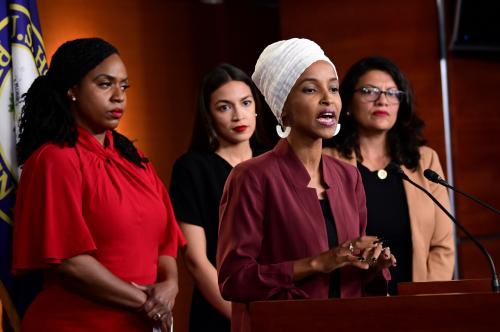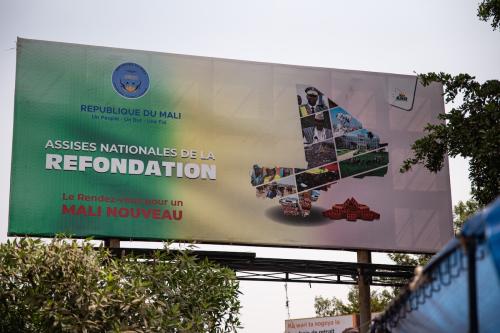As fears about the coronavirus increased in early 2020, Asian Americans began to sound the alarm about a rise in anti-Asian violence. Yet it took more recent shocking video footage of elderly Asian Americans being callously pushed to the ground—in one case fatally—to capture the nation’s attention. The videos unified Americans who expressed outrage toward perpetrators who were visibly younger, bigger, stronger, and faster, and incited a call to protect victims who were discernibly more vulnerable by comparison. In the victims, many of us saw our grandparents and parents whom we had not seen in person since the pandemic’s outbreak.
While media outlets decried the most recent surge in anti-Asian violence as “sudden”, for Asian Americans, there is nothing sudden about this. Since COVID-19 emerged, Asian Americans have become convenient scapegoats for the past administration’s failure to contain the coronavirus. Accusing China of manufacturing the coronavirus as a deliberate act of bioterrorism, and then faulting China for its spread, Trump dubbed it the “Chinese virus,” the “Wuhan virus,” and “kung flu.” In one fell swoop, he laid blame on a country, its people, and, by extension, Chinese and other Asian Americans for whom nativity has always been in question, and belonging, conditional.
Words have consequences. Just three weeks of “China virus” rhetoric in the media offset 13 prior years of declines in anti-Asian bias. Americans exposed to “China virus” rhetoric were more likely to perceive Asian Americans as foreign and un-American, which, in turn, can generate greater hostility and violence toward them. This is precisely what unfolded.
Since March of last year, there have been over 3,000 self-reported incidences of anti-Asian violence from 47 states and the District of Columbia, ranging from stabbings and beatings to verbal harassment and bullying to being spit on and pepper-sprayed. One of the first incidents occurred in March of last year when a Korean woman was grabbed by the hair and punched in the face in midtown Manhattan. A month later in Brooklyn, a man poured acid on an Asian woman while she was taking out the trash in her home, severely burning her head, neck, and back. Just last week in New York, an Asian woman was attacked with pepper-spray, another attacked from behind and then dragged and beaten, and a man stabbed in the back.
This handful of horrifying incidences reflect a larger gendered pattern of anti-Asian violence: victims are three times more likely to be women, and perpetrators, young men.
Anti-Asian violence is not only gendered but also aged. As a result, elderly Asian Americans fear leaving their homes, which prevents them from getting vaccinated and seeking other medical treatment. The threat of violence has spillover effects in multigenerational households: the adult children of elderly parents are disproportionately opting to keep their own school-aged children in remote schooling in order to minimize the risk of exposure to the coronavirus.
But Asian American children are remaining home for another reason: they, too, are targets of violence, harassment, and bullying. A recent study of Asian American youth found that one in four have been victims of racist bullying during the pandemic. In half those cases, adults were present but failed to intervene, magnifying the fear and vulnerability that Asian American children face.
While these senseless acts of anti-Asian violence have finally garnered the national attention they deserve, it is crucial to recognize that these actions do not reflect the attitudes of the majority of Americans. New research presented at the Eastern Sociological Society Annual Meeting shows that the vast majority do not feel anger toward Asian Americans, even after being primed about the coronavirus. Those who do, however, are more likely to be men and politically conservative Americans.
But anger among a small minority can generate widespread fear among a majority of Asian Americans, especially when those who are most likely to be angry are also most likely to act on their anger in violent ways, and choose vulnerable targets like women, children, and the elderly. The mere threat of violence has affected Asian Americans’ sense of safety and belonging in ways that they will not soon forget.
When President Biden signed a memorandum that condemned racism, xenophobia, and intolerance against Asian Americans and Pacific Islanders on January 26, the AAPI community breathed a sigh of relief, but also knew that more needed to be done.
This is a moment of reckoning for all Americans—not only Asian Americans—to reimagine what safety, belonging, and justice could look like. We are already seeing signs of this. Hundreds of Americans are volunteering to escort elderly Asian Americans to help them feel safe, and hundreds more gathered over the weekend at a rally in New York to protest anti-Asian violence. When neighbors learned that an Asian American family with two young children in Orange County, California was being harassed repeatedly by a group of teenagers, they organized to stand guard each night to protect them and their home.
Working closely with local residents, Asian American community organizers are rejecting a blanketed call for greater police presence, which can have the unanticipated consequence of increasing tension and conflict, and escalating violence in minoritized communities. Instead, they are calling for federal, state, and local governments to support their organizing efforts by assisting victims in reporting crimes, providing more resources to work toward interracial solidarity, and training local residents in bystander intervention.
Just as importantly, in the same way that anti-Asian racism has a long and ugly history in the United States, our solutions too must envision long-term change, beginning in our schools. Adults can no longer stand by idly while children experience anti-Asian bullying. Instead, school districts can support the implementation of evidence-based interventions to reduce bullying, hate speech, and harassment in schools. Restorative justice is one promising approach that avoids traditional punitive measures, which tend to have a particularly negative impact on Black students, and instead facilitates an inclusive community environment.
While the COVID-19 pandemic has laid bare systemic weaknesses in our country’s ability to protect groups who have been historically oppressed and marginalized, it has also presented an opportunity to break with the past, and reimagine safety, belonging, and justice anew.
The Brookings Institution is committed to quality, independence, and impact.
We are supported by a diverse array of funders. In line with our values and policies, each Brookings publication represents the sole views of its author(s).








Commentary
Re-imagining safety, belonging, and justice in the wake of anti-Asian violence
March 1, 2021